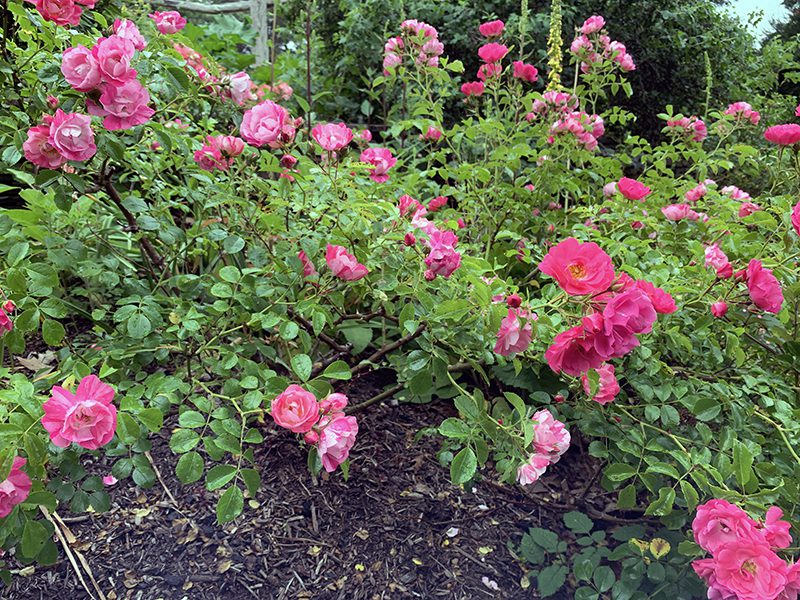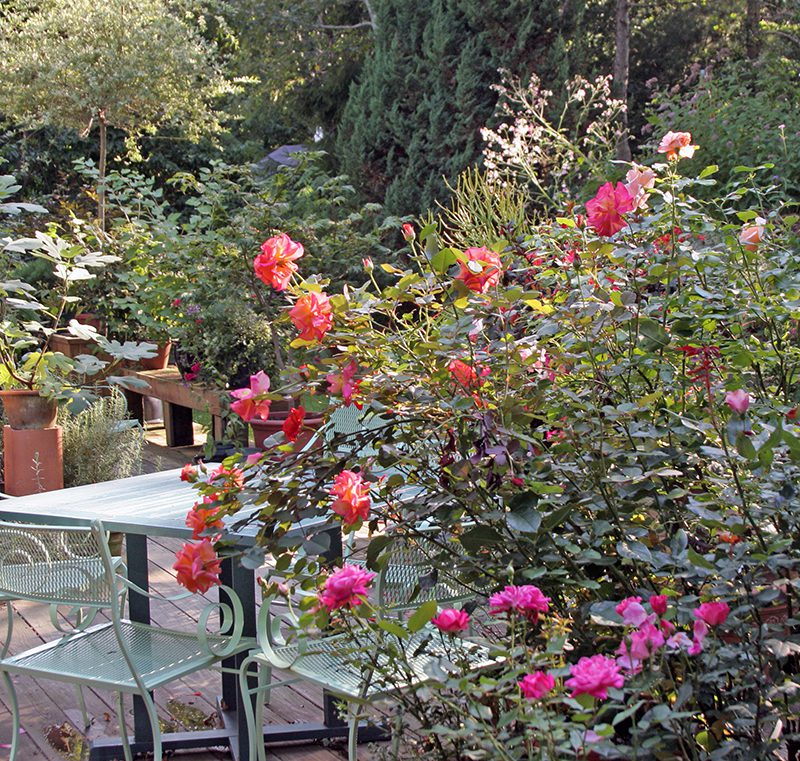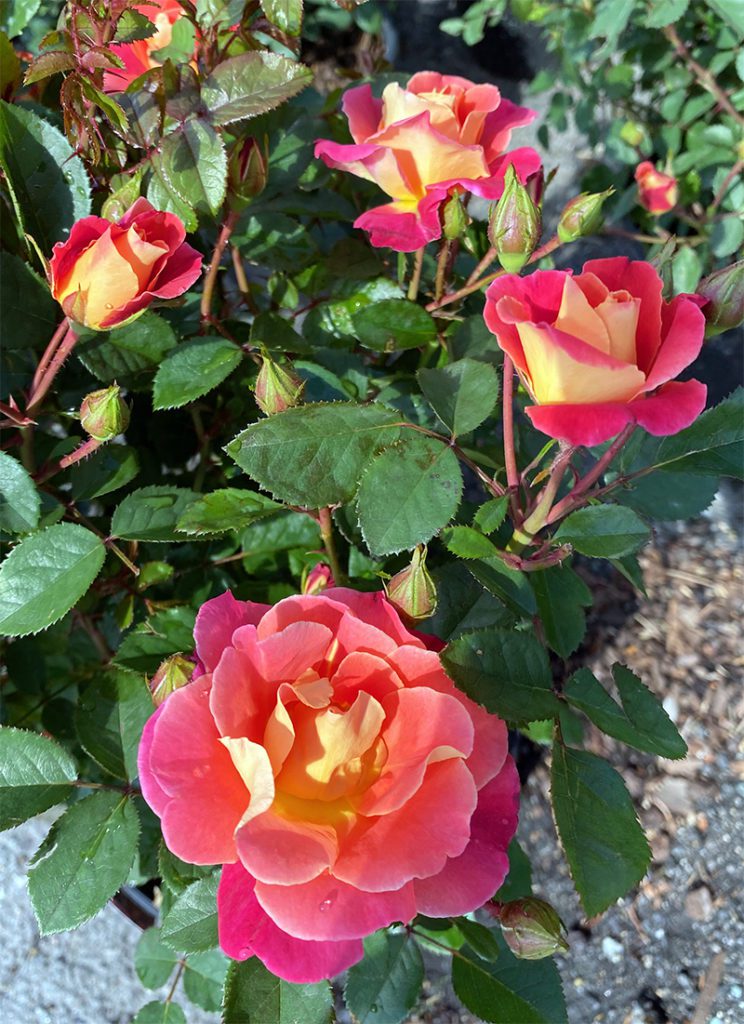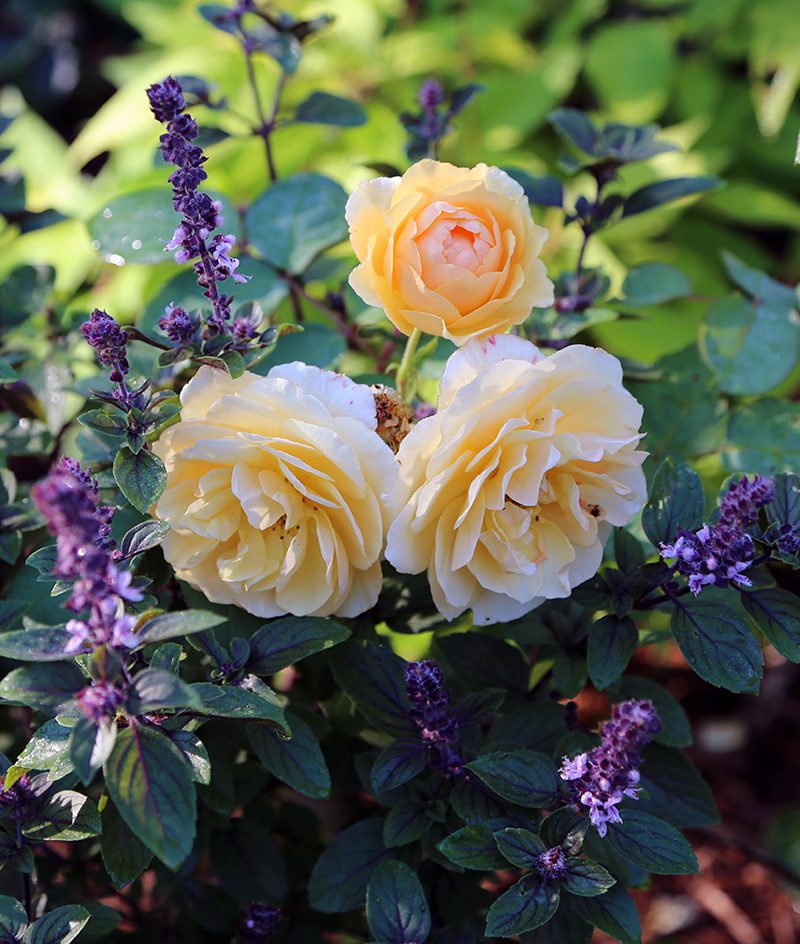Grow A Rose Garden
Grow A Rose Garden
Along with the blue mophead hydrangeas, roses are an especially popular plant on Cape Cod. Nothing says summer on the Cape like roses and hydrangeas in full bloom. But although these shrubs are both prized, they require different growing conditions. If you want a rose garden, you’ll need organically amended soil, sunshine, a regular deep soaking, and some on-going care. Here are the steps to take if you want to grow roses.
Choose the Right Rose
The first step when deciding to grow roses is to choose the right type. Some roses require more care than others, and there are plants that stay low, grow to five feet tall, or climb tall to cover trellises and arbors. Pick roses for your landscape based not only on how much you like the flower, but also for the amount of time and effort you’re willing to spend on your plants.
Landscape roses, also known as shrub roses, are the easiest plants to grow. These types have been bred and selected for disease resistance and repeat flowering whether they are deadheaded or not. Knockout, Drift, Flower Carpet and Oh-So-Easy are four common brands of landscape roses. Check sizes on the labels to match the right shrub with the location where you’ll be growing plants.

Floribundas, Grandifloras, and Hybrid Teas are favorites among rose lovers because many of them are fragrant and the flowers are often what people think of when they picture a rose. These plants require a bit more work in that they are often not as resistant to blackspot, the most common fungal problem on Cape Cod. They also need more selective pruning, and deadheading the flowers may be needed to stimulate more blooms. Some of these roses grow quite tall, and some grow wide. The tags will give you information about the best placement for these types of shrubs.

Climbing roses are plants that grow anywhere between eight feet and eighteen feet tall. These plants need to be tied to a structure, and regularly pruned to stimulate new growth on all parts of the plant. Typically, you renew climbing roses by cutting one of the oldest canes down to about a foot tall, then pruning other stems at various heights in order to promote growth over the entire structure.
Tips for Successful Rose Gardens
Plant roses in full sun. To grow these plants well you need at least five hours of dead-on sunshine that includes the noon hour. If you don’t have beds in your yard that receive that much sun, consider growing roses in pots on a deck or patio. You can either over-winter those pots in an unheated garage or bulkhead, or treat the roses like annuals, buying new plants every spring to enjoy all summer.

Preparing the soil is important when growing roses. In new beds, scatter Rose-tone fertilizer over soil that has been weeded. Next, cover the entire area with three to five inches of compost. As the roses are planted, some of this gets mixed into the ground while the rest remains on the surface to enrich the area from the top down. Finally, after the roses are planted, spread an inch of mulch on top of the soil and compost. The mulch helps prevent weeds, keeps the soil more evenly moist, and adds organic matter over time. Use Rose-tone at least twice more during the growing season, applying it in April, early June, and early July.
Roses flower at the ends of new growth. This reminds us that the fertility of the soil and a deep soaking about once a week are important for stimulating the new growth that results in flowers. It also means that the more new growth you see on your plants in the spring, the more flowers you’ll have in the summer. For this reason roses aren’t usually cut down short in the fall or spring.

Taking off the faded flowers is called deadheading, and most roses are stimulated to make more blooms when you remove the spent blooms. Even the landscape roses that don’t require deadheading re-bloom faster when the old flowers are promptly clipped.
Watch for signs of blackspot, which is a fungus that causes black spots and yellowing, falling leaves. Any rose that is prone to blackspot should be sprayed with an organic fungicide starting early in the season, before signs of the disease appear. Occasionally roses also get powdery mildew, and the same fungicide can be used to treat that fungal problem as well.

Subscribe To Our Newsletter
Sign up for our weekly email about sales and events.
